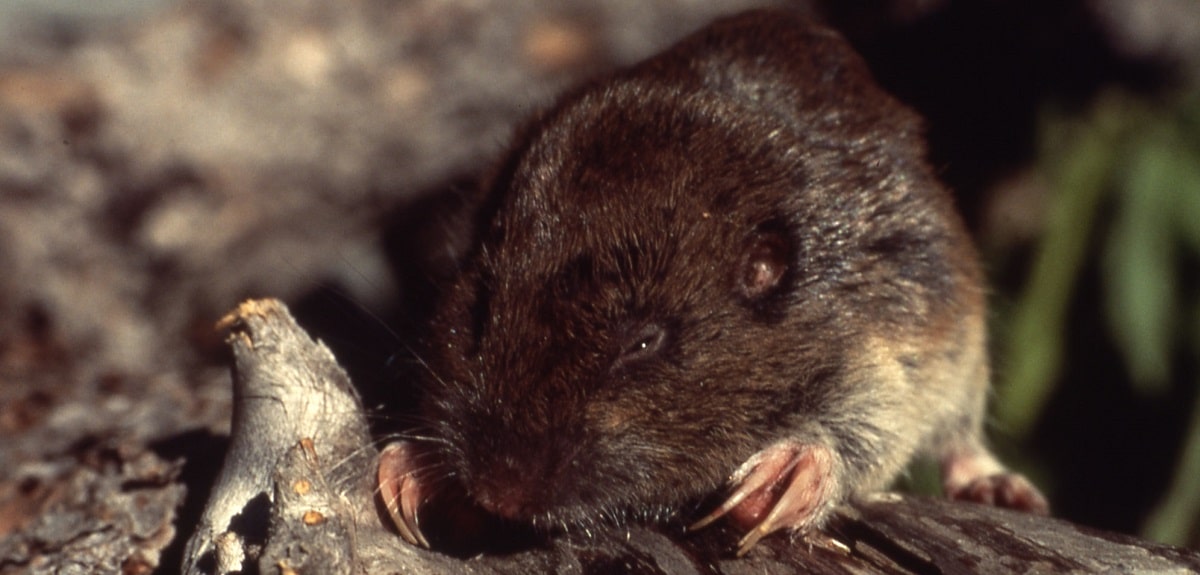
Gophers can cause widespread damage across your property before you even realize there is a problem. These wily little rodents love to tunnel and chew, not unlike voles, but they’re large and can be voracious during the breeding season. Learn how to identify these animals and tell them apart from moles, voles, groundhogs, and other similar rodents so you can choose the right targeted approach. We’ll teach you how to get rid of gophers in the yard.
What Are Gophers?
Gophers are burrowing rodents found across the U.S. There are over 40 species, most of which are found somewhere in North or Central America. They’re the largest of the common rodents that tunnel through urban and suburban yards. That means they can cause extensive damage. Not only can they put numerous dead patches in your lawn in one night, but they’re also known for causing expensive damage at commercial farms.
Gophers vs. Moles
Moles are darker colored, have a very short tail, and feature large digging claws on their feet. Gophers are larger, lighter colored in most cases, and have medium-length tails covered in fur. Moles create mounds with no obvious openings and a very rounded shape. Gopher mounds have a clear hole somewhere on them and take a different shape.
Gophers vs. Voles
Voles look similar to gophers but are smaller. They also have a larger head to their body size than gophers. Voles have short furry tails and tend to dig very shallow tunnels you’ll see running along the soil’s surface. Grass often dies off quickly when a vole tunnels, although it can take a few days to respond to gopher damage. Voles don’t form mounds like moles or gophers and just leave openings and holes in the surface.
How to Recognize a Gopher Problem
Become an expert in identification before you decide how to get rid of gophers in the yard.
Gopher Mounds and Holes
The mounds formed by gophers have a distinctive horseshoe-type shape to them. They’ll have a higher-raised side and a protected lower area, which is where the opening tends to be found. Loose dirt may cover the top of the opening, so poke around the inner part of the horseshoe shape with a stick to see if you can uncover this hole. It’s the best way to determine if you’re dealing with gophers or moles.
Why Are Gophers in the Yard?
Gophers need shelter from their enemies, which include hawks and red foxes. Your yard may feature a lack of predators and a perfect food source. Gophers like to eat:
- Bulbs of many popular landscaping plants.
- Seeds of flowers.
- Grass, especially if it’s allowed to form seeds.
- Small flowers.
- Many types of roots.
Gophers also need relatively sandy and loamy soil to dig in. They don’t like heavy clay, rocky soils, or pure sand that collapses as they tunnel. Of course, you can’t significantly change the soil on your property just to exclude gophers.
Gopher Problems
Moles and voles often damage your landscaping plants and leave dead patches of brown grass on your lawn. Gophers can do all that and dig tunnels so large they could compromise your home’s foundation. They also love to chew pipes and wires when they can find them, potentially damaging your buried utility lines.
Each burrow system can cover up to 2,000 square feet underground. That means a family of gophers can hollow out an area nearly as big as your home. Getting rid of the gophers won’t just preserve your favorite flowering bulbs and shrubs, but it will also prevent serious damage to your home.
Why Gopher Repellents Don’t Work
That you could just spread the right liquid or set up a tool and never see gophers again is a nice idea. Unfortunately, the reality is a little different. Ultrasonic and thumping repellents simply don’t bother gophers (or most other rodents) very much in the open environment. They’ll just go around them or pick a different direction to dig. Castor oil, predator urine products, and strongly scented soaps rarely get their attention.
Other home remedies like trying to seal or flood the tunnels are impractical because you’ll rarely be able to find every tunnel and mound on your own. Failing to deal with the entire burrow will just leave the gophers living in a different section you haven’t found yet. Hot peppers and homemade mixtures of various liquids are unlikely to help much either, no matter how much you spread them.
How Critter Control Gets Rid of Gophers
Gopher control is no easy task because the average yard is full of both food sources and ideal habitats for these animals. Even if you humanely removed every gopher currently on your property, you’d simply find more gophers moving in. The key is discouraging them altogether by reducing food sources and setting up exclusion efforts that prevent new gophers from entering. Critter Control can handle both of these efforts while also setting up quality traps at every gopher mound and tunnel on the property. This deals with the current population of gophers while keeping newcomers from moving in to fill the gap.
Trying to set traps and exclusion methods yourself is not as likely to succeed as professional gopher control measures because our experts can find tunnels and mounds you’ll likely never find. Our ongoing gopher control maintenance services follow up to ensure that any early signs of gopher re-infestation are dealt with immediately.
Struggling with gophers for years can take all the enjoyment out of trying to garden or landscape around your home. They could also put your home at risk for serious damage if they’re allowed to continue tunneling under your yard.
Put a stop to gophers for good with the help of the Critter Control team. We’ll find every tunnel and mound, so our trapping and exclusion methods provide the results you want.